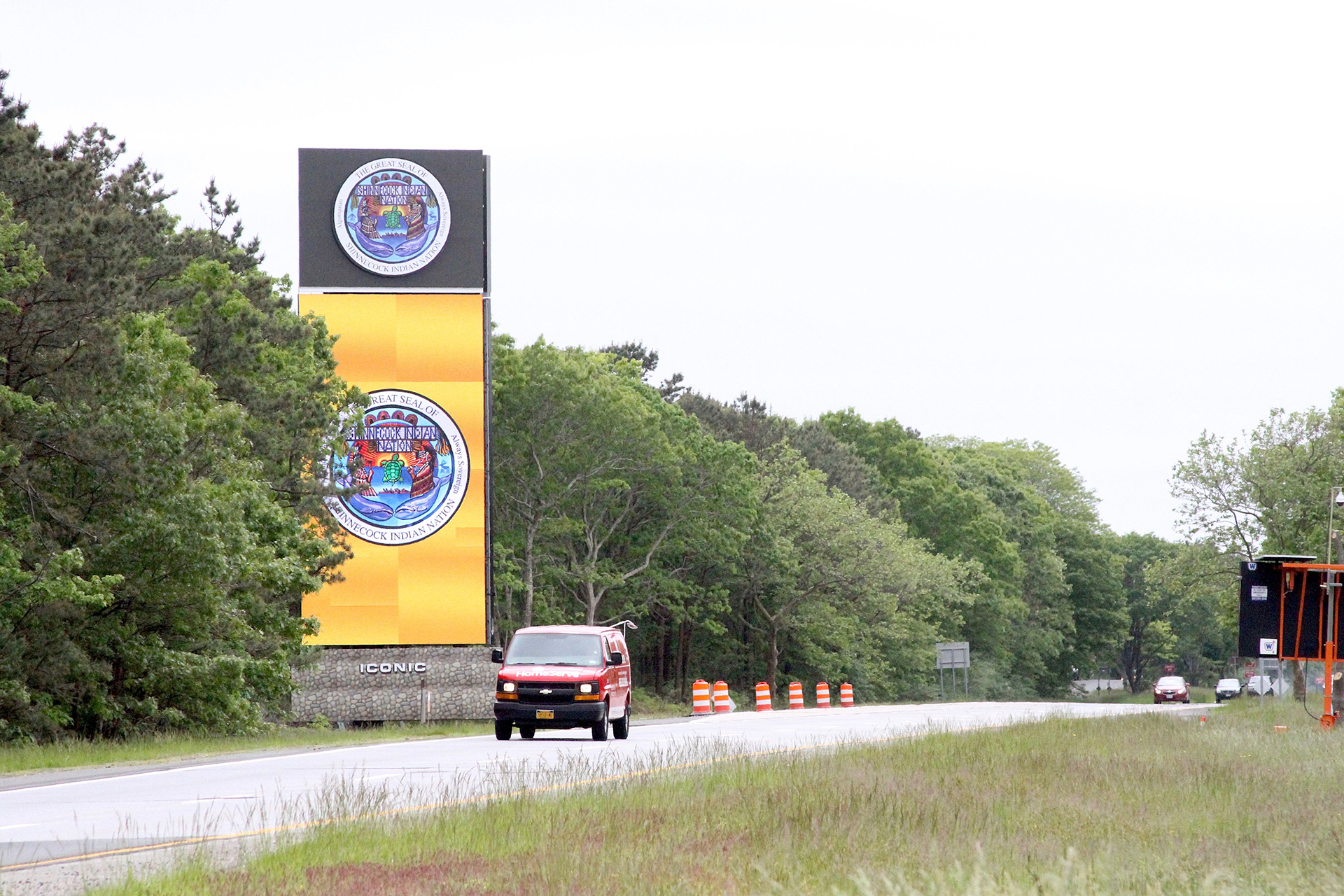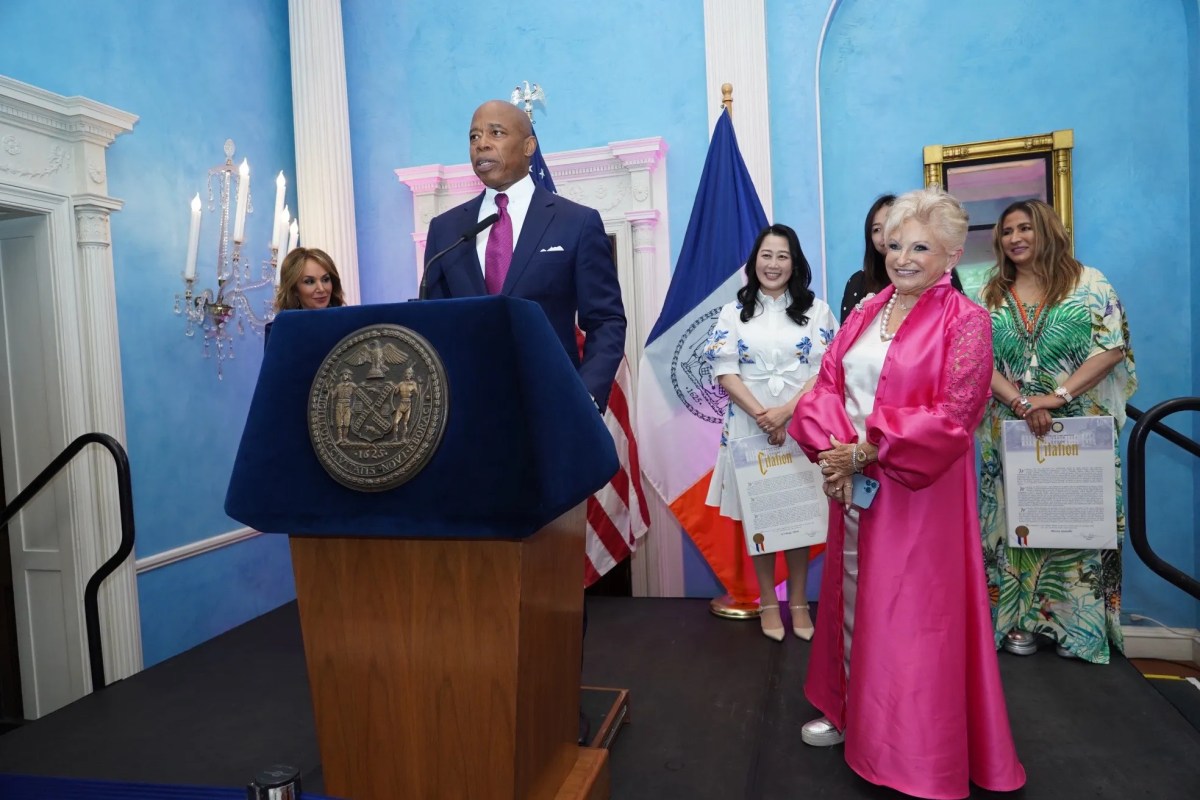Judge Says ‘No’ To Removing Shinnecock Billboard

The Shinnecock Indian Nation is celebrating a small victory when it comes to its controversial electronic signs along Sunrise Highway.
On May 19, New York State Supreme Court Judge Sanford Neil Berland denied the state’s request for a preliminary injunction to remove the Nation’s existing 60-foot-tall monument and double-paneled electronic billboard on Sunrise Highway in Hampton Bays.
The judge’s ruling dissolved the temporary restraining order, issued May 24, 2019, after the New York State Attorney General’s Office brought a lawsuit against the officers of the Shinnecock Indian Nation on behalf of the commissioner of the State Department of Transportation.
Berland found the state’s request to halt the construction and operation of the signs was “unwarranted” and that the state would suffer “no irreparable harm” if the billboards remained while the case proceeds.
The first electronic billboard was built a year ago amid much controversy on the south side of the highway’s eastbound lanes in an area known as Westwoods. A temporary restraining order was issued to stop the construction of the other on the opposite site of the highway, also on property that’s part of Westwoods, which is bisected by the state right-of-way for Route 27. The judge called the property in question “indisputably long-owned and occupied by the Shinnecock Indian Nation.”
“Ultimately, the burden will be upon the state and town plaintiffs to refute the defendants’ contention that the Nation has sovereign control over the Westwoods property,” Berland wrote. “On the current record, it is impossible to conclude that the plaintiffs will succeed in doing so.”
The Nation continued to operate the monument billboard while the lawsuit was pending. Most recently, at the request of the Town of Southampton, the billboard displayed public service announcements relating to the
COVID-19 pandemic.
“Our signs are clearly within the Shinnecock territory,” the Shinnecock Nation Council of Trustees said in a statement. “It is the Shinnecock Nation’s right to conduct economic development on Nation lands.”
Berland acknowledged that the monuments and its signs stand to generate revenue for the tribe through advertising.
“Further, the electronic signs, however eye-catching they may be — which, presumably, is the intent that underlies them — pose none of the disruptive consequences that the federal District Court attributed to the previously proposed gaming venture,” Berland said, “and, unless constructed and operated without regard to accepted engineering standards, which appears not to be the case, pose no unacceptable safety risk.”
But the judge did not rule completely in the Nation’s favor. He denied the Nation’s motion to dismiss the case, and scheduled a June 1 video conference to discuss the request to impose contempt sanctions on the state.
What is next for the tribe? Tribal Chairman Bryan Polite said the Council of Trustees is contemplating next steps.
taylor@indyeastend.com



